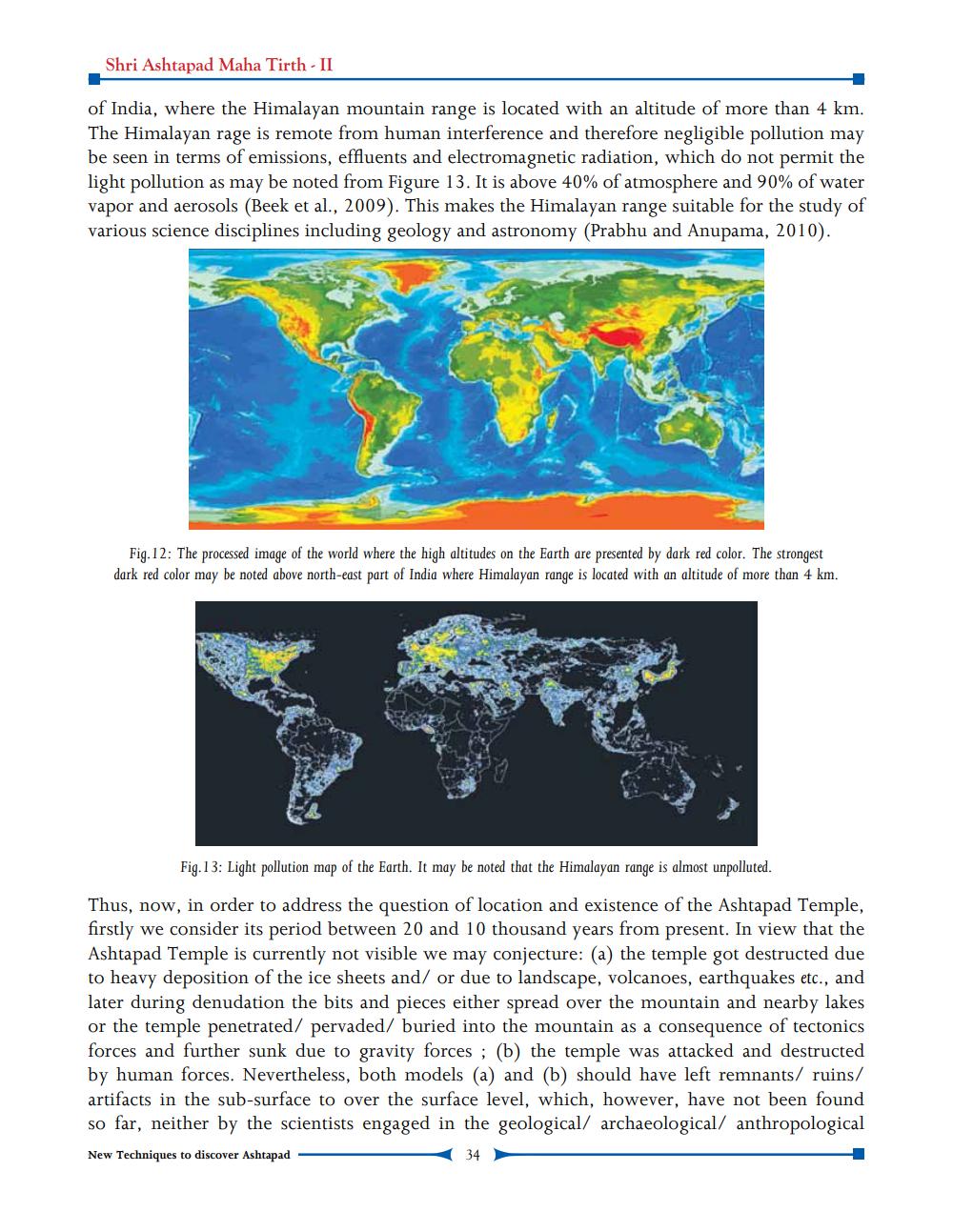________________
Shri Ashtapad Maha Tirth - II
of India, where the Himalayan mountain range is located with an altitude of more than 4 km. The Himalayan rage is remote from human interference and therefore negligible pollution may be seen in terms of emissions, effluents and electromagnetic radiation, which do not permit the light pollution as may be noted from Figure 13. It is above 40% of atmosphere and 90% of water vapor and aerosols (Beek et al., 2009). This makes the Himalayan range suitable for the study of various science disciplines including geology and astronomy (Prabhu and Anupama, 2010).
Fig. 12: The processed image of the world where the high altitudes on the Earth are presented by dark red color. The strongest dark red color may be noted above north-east part of India where Himalayan range is located with an altitude of more than 4 km.
Fig. 13: Light pollution map of the Earth. It may be noted that the Himalayan range is almost unpolluted.
Thus, now, in order to address the question of location and existence of the Ashtapad Temple, firstly we consider its period between 20 and 10 thousand years from present. In view that the Ashtapad Temple is currently not visible we may conjecture: (a) the temple got destructed due to heavy deposition of the ice sheets and/ or due to landscape, volcanoes, earthquakes etc., and later during denudation the bits and pieces either spread over the mountain and nearby lakes or the temple penetrated/ pervaded/ buried into the mountain as a consequence of tectonics forces and further sunk due to gravity forces ; (b) the temple was attacked and destructed by human forces. Nevertheless, both models (a) and (b) should have left remnants/ ruins/ artifacts in the sub-surface to over the surface level, which, however, have not been found so far, neither by the scientists engaged in the geological/ archaeological/ anthropological New Techniques to discover Ashtapad
34




